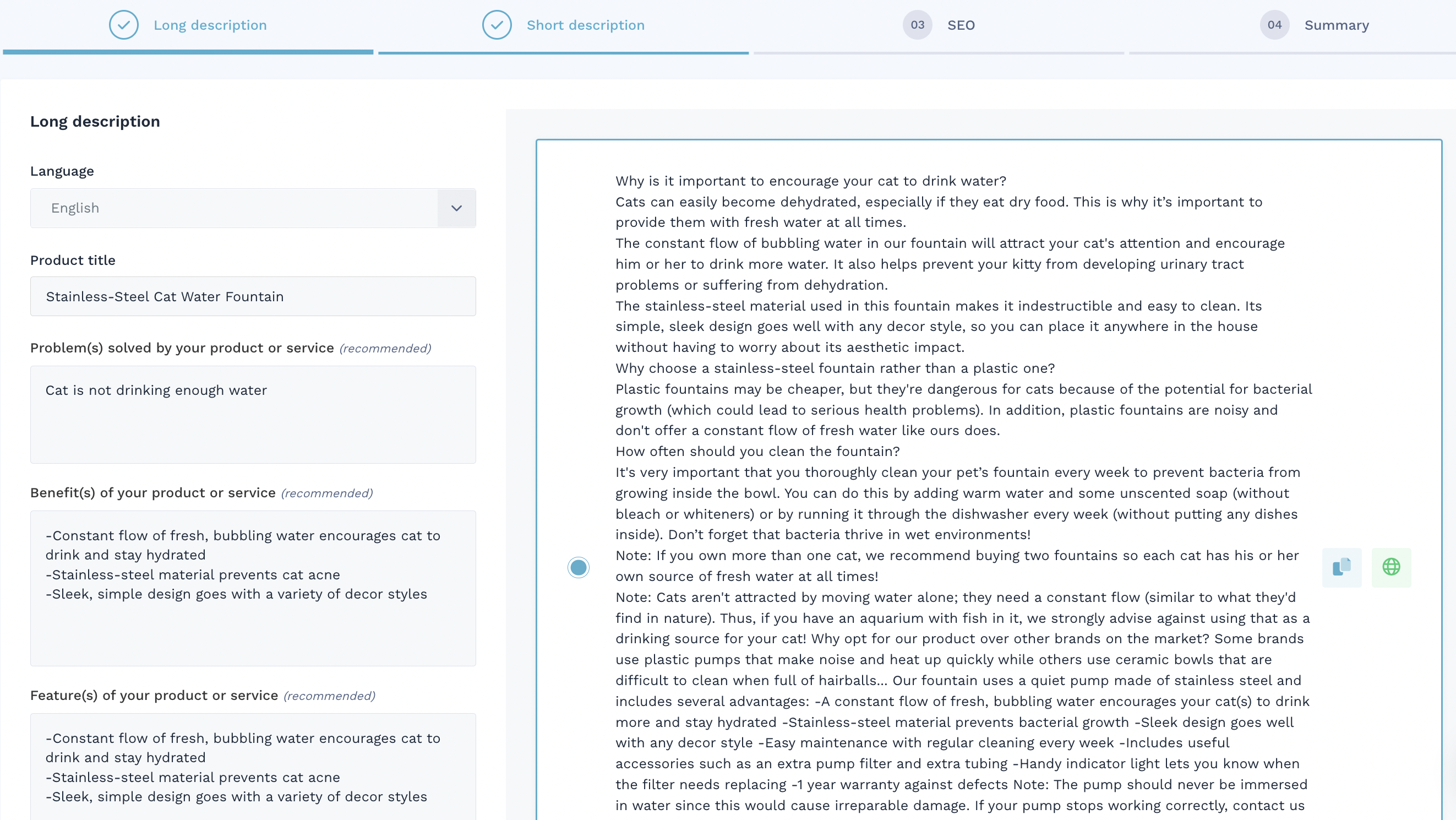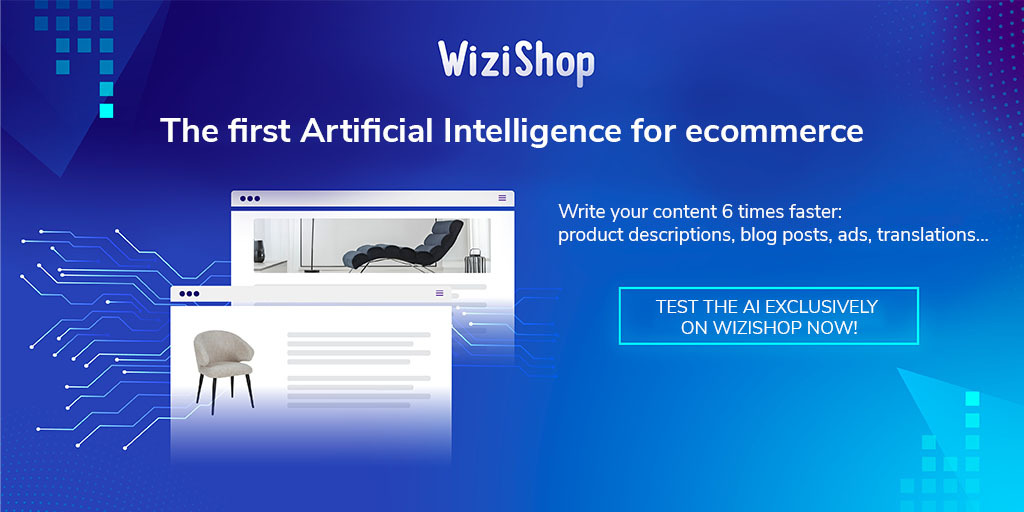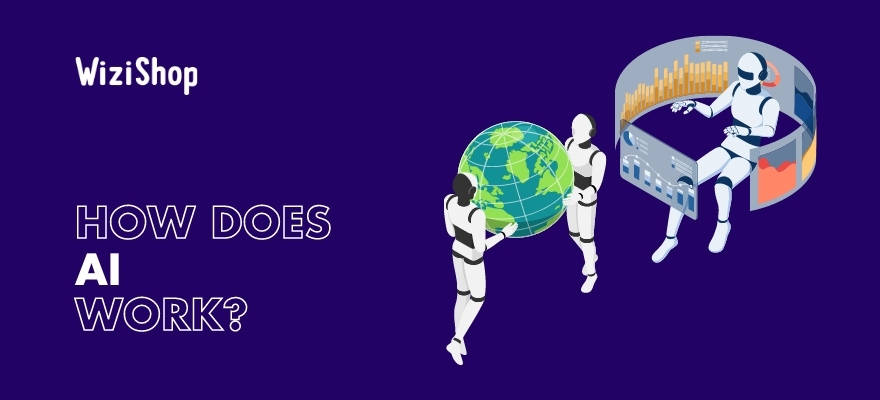Artificial intelligence is a scientific and computer science field that is developing day by day. Its applications are many, and it possesses a plethora of capabilities to be able to help people solve problems or complete tasks more easily. Artificial intelligence technology can be found in everything from social networks to language translation software, search engines, and much more. However, the general concept of artificial intelligence can sometimes be difficult to understand, and the recurring question is “How does it work?”
We’re surrounded by connected objects that use this set of systems and techniques to go even further in the use we have of technology. In this article, we’ll take a look at the formulas that form the basis of the various objects of today, which meet the needs of customers, companies, and individuals, equipped with multidisciplinary knowledge and multiple and complex artificial intelligence.
FAQ: Explaining artificial intelligence simply
To help you learn more about artificial intelligence and better understand how it functions and what its various capabilities are for people and companies everywhere, here are the answers to a few common questions.
Definition: What is AI?
AI, or artificial intelligence, is a relatively young field, about 60 years old, which brings together many disciplines with the aim of creating a machine that can imitate human intelligence and cognitive abilities. It’s often materialized by the image of intelligent robots. Logic, mathematics, computer science, philosophy, or probability and statistics are the fields of activity that build artificial intelligence in general. Over the years, AI has developed into different systems, with different techniques and technology, making it possible to reach the goals set by researchers and engineers.
What is the goal of artificial intelligence?
The goal of AI is to be able to imitate the cognitive performance of human beings in order to help them in their daily lives. By automating certain tasks, by creating content automatically, and by allowing humans to devote themselves to other activities thanks to the help of the machine, people find in artificial intelligence a daily aid in their everyday lives as well as at work.
Although artificial intelligence was initially created to carry out equations with mathematical parameters and probabilities in a linear way, today, artificial intelligence is able to learn and adapt to its user, making it a very helpful tool for both personal and business use.
What are the four typical categories of artificial intelligence?
Within the large family of artificial intelligence, we consider four different types of AI:
- Reactive machines
Reactive machines are types of artificial intelligence that don’t have the power to learn but simply the ability to imitate certain characteristics of the human mind, with little added value. These objects respond to human solicitations in a restricted way and can process a minimum amount of data. This type of artificial intelligence is the starting point of AI.
- Limited memory
Limited memory machines are based on a neural scheme. These objects are learning machines and rely on a neural network that allows them to make decisions with a lot of data processed at the same time. Through its memory, the machine will be able to store a large amount of data in order to better interact with users.
- “Theory of mind” machines
“Theory of mind" machines aren’t a type of artificial intelligence that is available to us. This type of machine feeds the collective imagination and popular culture. These objects would be able to imitate the understanding and analysis of humans as well as their actions. This kind of artificial intelligence would place the object at the same level as the human.
- Self-aware machines
Self-aware machines don’t exist. The concept of AI is based on the fact that the intelligent robot would then become more efficient than humans, with a powerful artificial intellectual stimulation, and would be a potential threat to humankind. As of right now, this type of artificial intelligence only exists in science fiction.
What are the benefits and uses of AI in general?
Artificial intelligence has many benefits for humans, in terms of performance and speed of execution of certain tasks. Basically, this type of program was invented to help people in repetitive actions in order to relieve them through automation. Today, artificial intelligence is all around us.
For example, AI is used in recommendation algorithms, social networks’ algorithms, voice-activated responses from connected devices, autonomous vehicles, software for language translation, search engines, etc. All these services present in the connected objects of our daily lives are of the order of artificial intelligence. More and more actions are automated and support human actions in all areas of life. Humans then manage the more important tasks. They can trust artificial intelligence to relieve them in some areas.
For example, in ecommerce, SEO is a very important element in the success of an online store. With the WiziShop solution, in addition to an optimal SEO strategy and a sound base for SEO, the ecommerce solution offers its own artificial intelligence for automatic text writing.
Sellers no longer have to worry about the quality of their writing. They can free up their time to focus on much more important actions and problems in their daily business life. From the moment you sign up on the platform, you'll be able to generate texts highly optimized for SEO and whose quality is well established. For example, here is a product description generated by the Wizishop artificial intelligence:

Test Wizishop with a 7-day free trial, get your first month for just $1, and unlock your AI text generation without delay!

Try WiziShop free for 7 days
THE EASIEST NO-CODE ECOMMERCE SOLUTION✅ No credit card required
✅ Access to all features
✅ No commitment
How artificial intelligence works
How did the first artificial intelligence technologies work?
The first AI technologies had objects configured by humans to perform very precise and repetitive tasks. Artificial intelligence was present mostly in the fields of mathematics, probability, and calculation.
How do machine learning techniques work?
Machine learning is AI that came later thanks to massive data. With machine learning, the intelligent robot is inspired by the collected data to improve itself. This technology is based on a neural network. Machine learning is present in all artificial intelligence technologies around us, used by individuals and companies alike.
How does the deep learning process work?
Deep learning goes even further than machine learning with its applications: this AI is also based on the massive amount of data in order to reason with even more intelligence. Deep learning can be found in any software or system that uses facial recognition in particular. Deep learning allows a much more nuanced and precise use of artificial intelligence.
Will artificial intelligence outperform humans?
It’s difficult to answer this question, as technologies are advancing at a rapid pace. Today, artificial intelligence isn’t more powerful than humans and isn’t capable of imitating the exact thoughts of humans. This concept only exists in culture, video games, and the collective imagination. For ethical and moral reasons, it’s difficult today to project oneself in the company of a type of artificial intelligence that’s more powerful than a human.
How will artificial intelligence change our lives?
Artificial intelligence will change our lives thanks to even more powerful systems that’ll arrive in the future. Types of artificial intelligence will be even more accurate solutions in business research and development, in data processing, or in the ability to learn and understand.
With their many applications and capabilities, artificial intelligence systems will be able to revolutionize many fields, such as health and quality of care, learning and decision making, natural language processing, etc.
The technology and its development are only at the beginning of its societal impact for people and companies around the world. The history of AI is fast moving, and examples of AI of the future are fast approaching.










